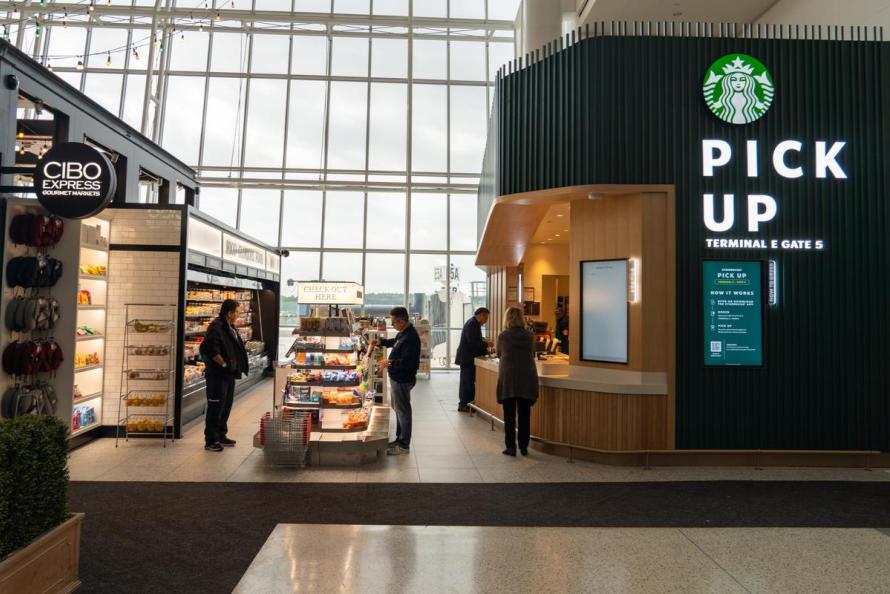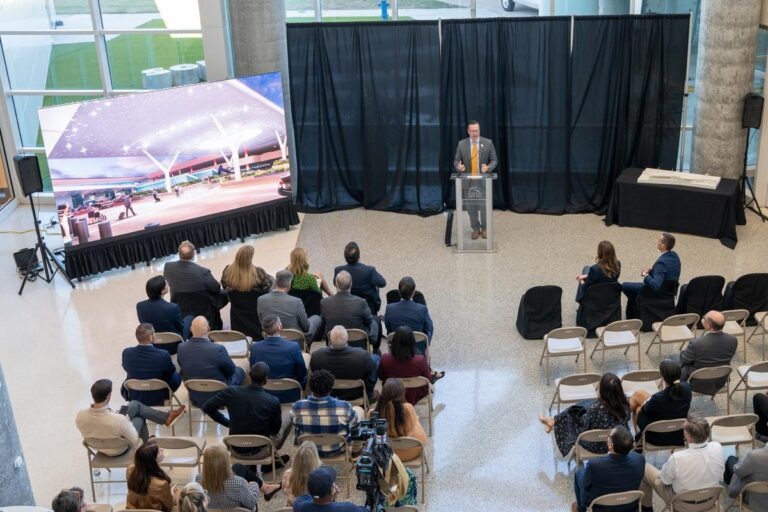
HOUSTON — Houston Airports is implementing self-service solutions to streamline the passenger journey and enhance the travel experience.
“Houston Airports exists to connect the people, businesses, cultures and economies of the world to Houston. We do that by establishing Houston Airports as a 5-Star global air service gateway,” said Liliana Rambo, Chief Terminal Management and Administrative Officer for Houston Airports. “Self-service technology plays a key role in Houston Airports delivering a world-class passenger experience. By embracing this technology, we empower passengers to take control of their journey, leading to a more relaxed and enjoyable travel experience.”
At George Bush Intercontinental Airport (IAH) and William P. Hobby Airport (HOU), self-service technology is strategically incorporated into the passenger experience with several benefits in mind:
- Enhancing Efficiency: Self-service kiosks and automated processes streamline tasks like check-in, bag drop and customs clearance, reducing wait times and allowing passengers to navigate the airport more quickly.
- Offering Choice and Control: Passengers can choose their travel journey. Tech-savvy travelers can breeze through with self-service options, while those who prefer personal assistance can interact with our friendly staff.
- Improving Accuracy: Self-service kiosks minimize data entry errors, ensuring a smoother travel experience.
- Innovation for the Future: Biometric technology allows facial recognition to become your boarding pass, further streamlining the process.
Embracing the challenges of self-service technology
“Self-service technology offers a wide range of benefits for Houston Airports and our passengers, but there are also challenges to consider,” said Rambo. “Not all passengers are comfortable using self-service technology. This can be due to a lack of familiarity with the kiosks, language barriers or concerns about using technology for important tasks.”
Even the most user-friendly technology can experience glitches. Technical support staff should be on hand to assist passengers who encounter problems. Kiosks and other self-service systems need to be accessible for passengers with disabilities. This includes features like screen readers, adjustable heights and clear signage.
“Based on those challenges, Houston Airports works to design our self-service systems to be intuitive and easy to use, with clear instructions available in multiple languages,” said Rambo. “After all, Houston is the most diverse city in the United States with more than 140 languages spoken in Houston homes. Houston’s airports also serve as a global hub, with direct flights to five inhabitable continents.”
“We provide staff who can answer questions and assist passengers using the kiosks in their preferred language. Additionally, we will have staff readily available to address questions and troubleshoot any difficulties,” said Diego Parra, Director of the IT Program Management Office for Houston Airports. “Our kiosks and other self-service systems will be compliant with the Americans with Disabilities Act (ADA) and will include features that cater to passengers with a range of disabilities.”
When time is of the essence, and with passengers potentially juggling children and luggage while navigating our airports, self-service technology offers the most value to making the passenger journey through Houston’s airports more intuitive, functional and efficient. The key technologies driving that development aims to deliver on those crucial expectations while allowing Houston Airports the opportunity to offer fast and deliberate responses to the needs of our passengers.
“By addressing these challenges, we can ensure that self-service technology is a positive experience for all our passengers. We are also constantly looking for new ways to improve our self-service offerings,” said Parra. “In the coming years, we plan to explore cutting-edge technologies like biometric integration, smart baggage tracking, and voice-enabled assistants. Our goal is to provide passengers with a variety of self-service options that are efficient, user-friendly, and accessible.”
Looking Ahead: A Seamless Journey Awaits
“The exciting thing about technology is, it’s constantly improving and evolving. Houston Airports endeavors to continually incorporate new innovations into our passenger experience,” said Rambo. Self-service technology plays a central role in this vision, and we’re excited to unveil our plans for the next five years:
- Increased Kiosks and Bag Drops: We’re committed to significantly expanding the number of self-service ticketing kiosks and baggage drop stations across our terminals. This ensures shorter queues and a smoother check-in process for tech-savvy travelers.
- Online Booking for Everything: Our online reservation system will encompass parking and concessions. Passengers can secure a parking spot and pre-order food and beverages before arriving at the airport, minimizing wait times.
- License Plate Recognition for frictionless parking transactions.
Incorporating innovation into new terminals
Houston Airports is building a new international terminal at Bush Airport, is partnering with United Airlines to build a new Terminal B at Bush Airport and is partnering with Southwest Airlines to expand Hobby Airport.
“All three projects are designed to support self-service technology across the passenger journey. By proactively creating the physical and digital space for self-service technology, Houston Airports is ensuring a smooth and efficient travel experience for passengers for years to come,” said Parra. “It’s impossible to envision the future of commercial aviation without prioritizing the role self-service technology will play in the future needs of airlines, stakeholders and passengers. It’s also crucial that Houston Airports maintains the standards for technology set by other global airports.”
To maintain its role as a global hub, Houston Airports must meet the expectations of its global passengers becoming more familiar with self-service technology each year.
Source: Houston Airports






